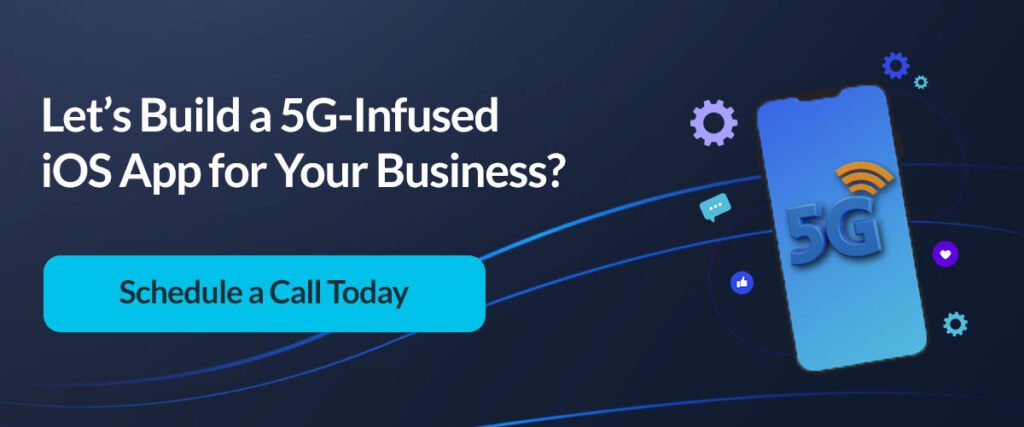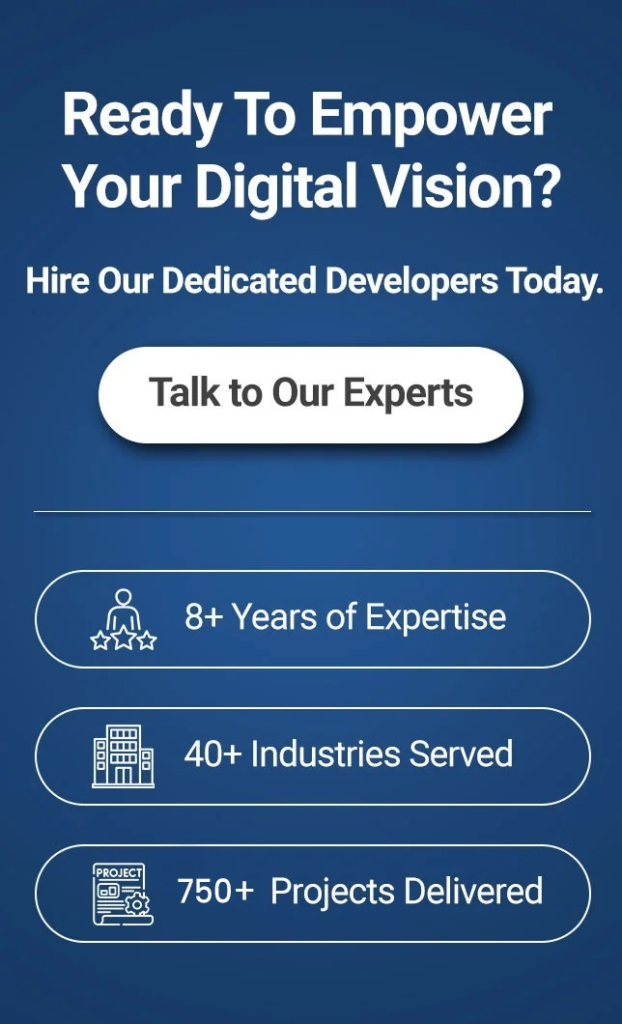Planning to build an iOS app in 2025?
Well, if so, you have probably made the best decision of your life and here’s why!
- According to recent statistics, the global market for iOS apps reached $240 billion in 2023.
- On the Apple App Store, there are 2,078,134 apps available. Out of it, there are 241,969 gaming apps and 1,836,165 non-gaming apps.
- As per the reports from Allied Market Research, the iOS app development market is expected to reach USD 1,481.82 billion by 2030.
That’s the true potential of iOS apps!
And it is no secret why businesses are going crazy over “iOS app development” to achieve their business goals.
The number of iOS apps will grow step by step in the following year, which is proof that the application market is full of innovations.
Whether you are developing iOS apps with some iOS development agency or planning to release your own products, do not lag behind the new tendencies in iOS app development and be in the lead of the IT world!
Let’s dive in!
7 Top Trends in iOS App Development in 2025
Here are the top iOS app development trends to consider in 2025.
#1. Swift 6

Swift 6 is one of the top iOS App Development Trends that has gained significant attention among businesses of all kinds. It’s one of the newest evolutions of Swift Programming, much evolved and transformed into a new advanced version of iOS app development. Swift 6 is meant to advance beyond just being iOS, with greater support for multi-platform usage. In that way, the apps that developers create are going to be cross-device compatible, making the apps friendlier for users and far more versatile.
This makes Swift’s coding syntax quite clear and easy to read, almost intuitive. Coupled with strong compatibility, API, and module stability, Swift 6 presents developers with an opportunity to focus on the quality of their code and on building better apps.
#2. Integration of Edge Computing

A new edge computing technology is going to change how iOS apps work by shifting data processing to locations closer to the source to improve speed and cut latency drastically.
Especially in 2025, Apps will require real-time performance. When you hire dedicated iOS developers, you’ll have on board the experts thereby utilizing edge computing for key items such as real-time processing of data, AI inference, and efficient delivery of content.
Thus, it would eventually lead to improved performance and responsiveness of apps especially for latency-sensitive applications like gaming, AR, etc., because of their resource-intensive nature.
#3. IoT and HomeKit

Two such trends that are shaping the world of iOS app development at present include IoT (Internet of Things) and Apple’s HomeKit. IoT allows a user to seamlessly interconnect all his or her devices into a single, unified system, thereby making everyday tasks that much more convenient. Extending this view of integrating the functionality of devices across different vendors into a single, easy-to-manage ecosystem is what characterizes Apple’s home automation platform, HomeKit.
Using a recent update, HomeKit Secure Video enables users to receive instant notifications about important activities happening at home. Users can also view security footage directly from their Lock Screen without paying an extra penny since it works with an existing iCloud plan. Actually, HomeKit cameras are intelligent enough to distinguish between people, pets, cars, and packages, making home monitoring much more efficient and personal.
#4. Integration of 5G Technology
The largest driving force in the world of trends for iOS application development is integration with 5G, driving people to become change agents. We expect iOS developers, by 2025, to seize the chance of 5G’s faster speeds and lower latency to create an application design that would be able to play videos without interruption, clear video calls, and enhanced augmented reality applications that immerse the user within a network – all optimized for 5G.

#5. Blockchain Technology

Blockchain has revolutionized iOS app development at an unprecedented speed. No doubt, this is the future for developing more secure, decentralized applications. This would empower iOS developers to focus on building apps that develop trust and preserve privacy; it will provide the wonderful environment of safe data sharing, electronic identity management, and transactions.
Thus, the decentralized architecture of blockchain enables developers to significantly enhance the security and transparency of the applications concerned, therefore making it a good choice for applications that handle sensitive information or money transaction. Among the powerful tools used for the integration of blockchain in iOS development are Ethereum, Hyperledger, and Stellar.
#6. Chatbots & Voice Assistants

Voice assistants and chatbots are emerging quickly as important trends in iOS development, bringing great advantages to businesses as well as to individual users. As voice assistants like Siri, Alexa, and Google Assistant become a common fixture in our lives, iOS applications become an essential ingredient that makes users navigate the screen more smoothly and mobilized.
The increasing progress in natural language processing has highly improved voice assistants. Voices can now understand much more complex queries than they could earlier. To that end, having obtained those answers, they return very accurate information as well. So, by this point, voice assistants are valuable assets in app development.
#7. Voice assistants

Voice assistants are now emerging as an upcoming trend in iOS application development, hence proving to be fruitful for both the business as well as the end-users. With Siri, Alexa, and Google Assistant being incorporated into our daily lives, the integration of voice technologies with iOS apps brings seamlessness and portability to the user experiences.
Voice assistants can do anything from reminding a person to do something or playing music to ordering takeout and controlling IoT devices within a smart home. This will enable businesses to engage with their customers much more personally, serve them better, and provide a more personalized interaction through integrating voice assistants within their apps.
Step-by-Step Process of iOS App Development
Let’s take a look at the steps to build an iOS app for your business.
1. Market Research and Planning
Start with thorough market research. This stage identifies the needs of the users and formulates app ideas by working out the minutest of details along with substantial feedback and analysis. The urge to understand the market propels the process, making it guide the development of a product that meets the needs of the customer and leaves a niche in the competition landscape.
2. Wireframing & UI Design
When you have a solid concept, you can move to creating the wireframes and UI design. Design teams create intuitive layouts that meet Apple guidelines to ensure that it is friendlier to use as a user interface. This is the down step for laying the foundations of an experience that could be seamless and engaging.
3. Coding and Integration
Developers take designs and transform them into code that can work. Implementing both the front-end as well as back-end elements using the latest frameworks and cloud technologies is part of it. Thus, this is the time when life appears in an app; visual design transforms into interactive features and robust functionalities.
4. Testing and Quality Assurance
Extensive testing is then conducted on the application to expose the app to further rigorous functional, performance, and security testing. This helps ensure that the app will meet or exceed Apple’s stringent quality standards and function correctly under various conditions and on different devices.
5. Maintenance and Deployment
Continuous support after deployment is very crucial. Continuous support services handle problems when they occur, enhance performance, and even give room for user contributions to keep the app up-to-date and relevant in today’s world of constant change.
Final Thoughts
So, there you have it! That’s a wrap to the iOS app development trend to look out for in 2025!
It is no secret that it’s always evolving, and maintaining updated current trends is challenging for companies looking to be at the forefront of the highly competitive digital market. From new AI and machine learning developments to the latest cloud-based mobile apps and state-of-the-art security features, many trends are transforming and shaping the future of iOS development.
When it comes to iOS app development, consider a trusted iOS app development agency that can help you navigate the latest trends and create a successful app that meets your business goals. Partner with EitBiz and build an iOS app for your business. Drop us an email at info@eitbiz.com or call us at +1(812)530-6300 today!







